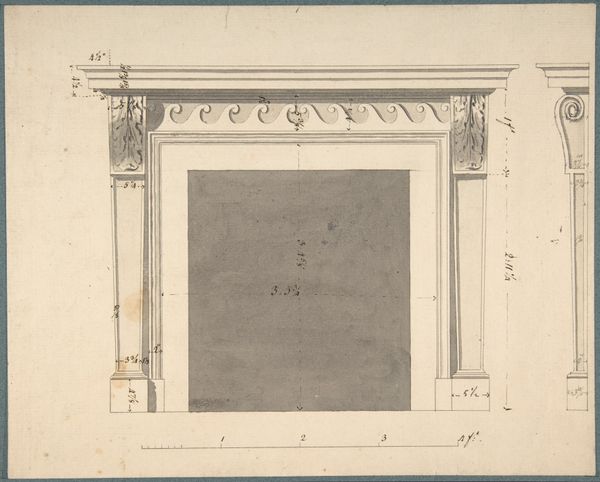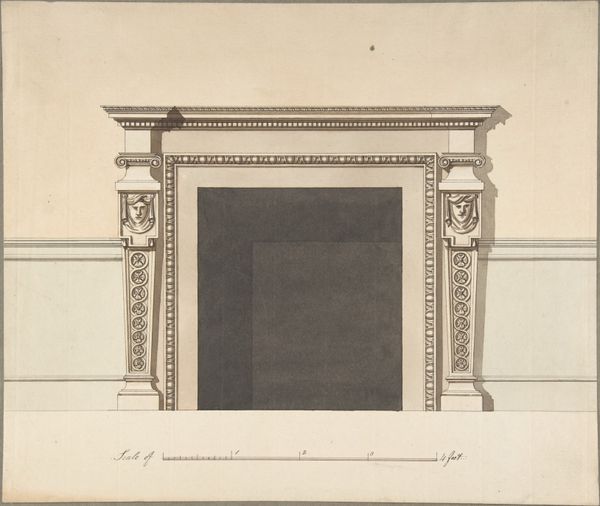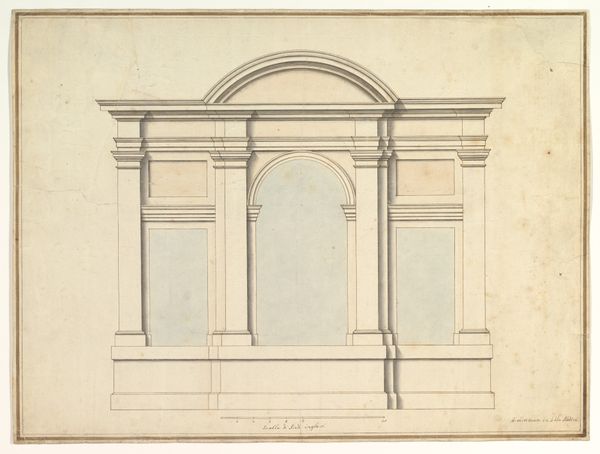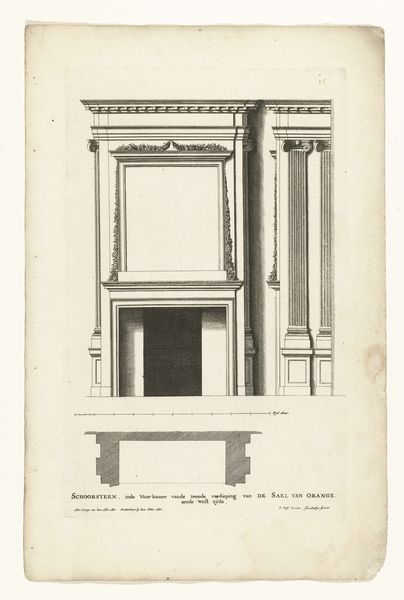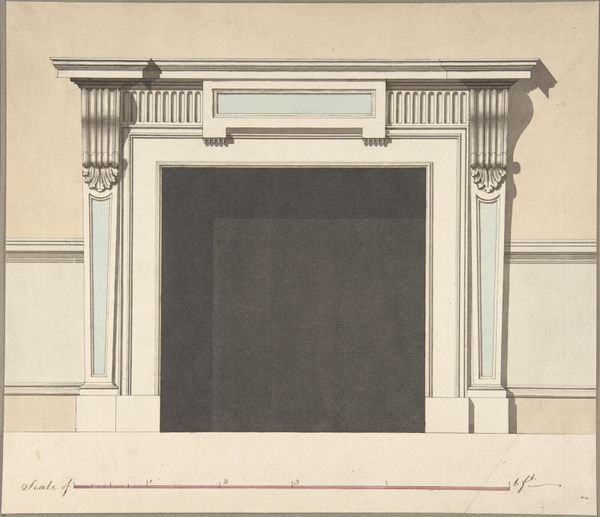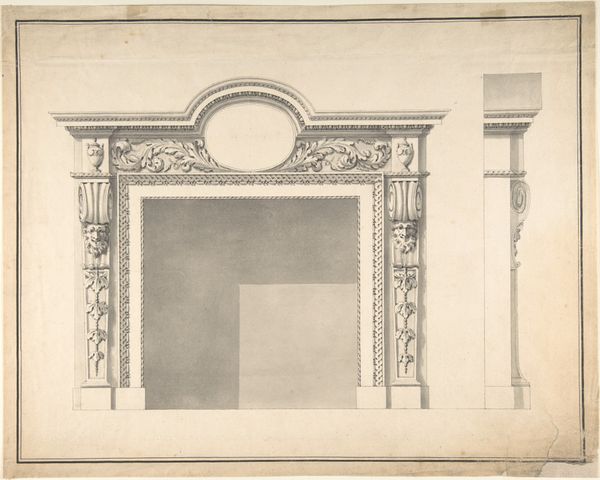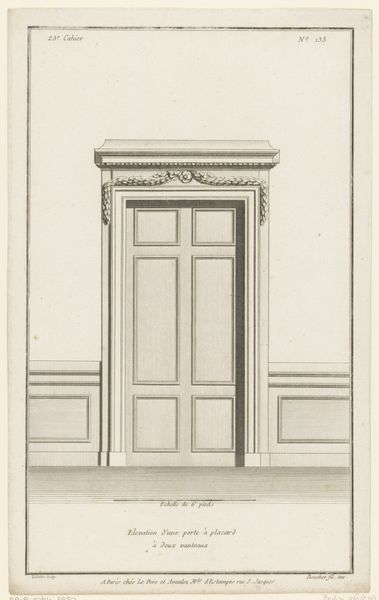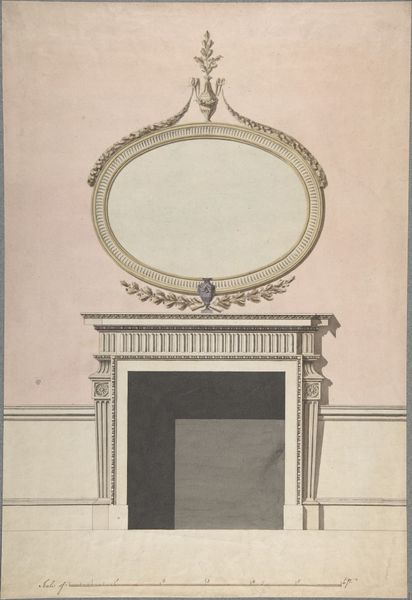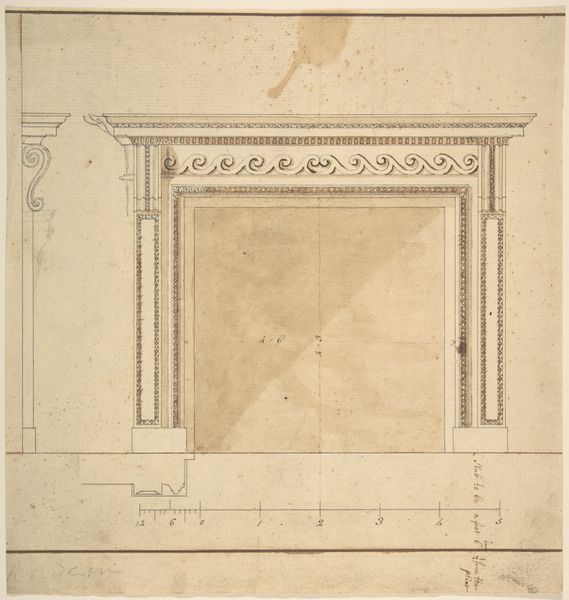
Design for a Chimneypiece in the Garden Hall, Manresa House, Roehampton, Surrey 1755 - 1765
0:00
0:00
drawing, print
#
drawing
# print
#
traditional architecture
#
classicism
Dimensions: sheet: 6 1/2 x 12 in. (16.5 x 30.5 cm)
Copyright: Public Domain
Curator: Let's take a moment to appreciate this drawing, a "Design for a Chimneypiece in the Garden Hall, Manresa House, Roehampton, Surrey," conceived by Sir William Chambers between 1755 and 1765. It's currently held at the Metropolitan Museum of Art. What are your initial thoughts? Editor: Well, my first impression is one of stark formality. The rigid symmetry, the calculated placement of every line. It speaks volumes about power, control, and a very specific vision of societal order. Curator: Precisely! Chambers was a key figure in disseminating neoclassicism in Britain. You see it here in the meticulously rendered architectural elements. It wasn’t simply about aesthetics, it was about projecting ideals of Roman virtue and Enlightenment rationality through built form. Think of the burgeoning British Empire needing to self- legitimize. Editor: Right, but it also feels exclusionary. That kind of perfect symmetry and order almost always comes at the cost of erasing other narratives, other aesthetic sensibilities. Whose voices are silenced in this vision of a perfectly ordered world? This was also a time when marginalized groups experienced immense social and economic strain; it serves as a stark reminder of those power dynamics. Curator: That's a very valid point. These designs were not conceived in a vacuum. The commission came from the elite; this drawing showcases the interior of a prominent house. Editor: And we cannot ignore the implications of the garden hall. During that era, landscapes and architecture became a way of asserting control and ownership over the natural environment, further solidifying hierarchies of wealth and power. Curator: Indeed. It's fascinating how much social history can be read through seemingly simple design elements. What strikes me is how successfully Chambers merged Palladian influence with hints of French design. It created a distinctly British neoclassical style. Editor: It’s compelling to observe this work through the lens of visual culture, recognizing the implicit socio-political statements ingrained in what seems like just an architectural design for a fireplace. It reveals so much about identity and power structures. Curator: This exploration truly enriched my comprehension of this drawing by William Chambers. Editor: I fully concur, observing these seemingly refined surfaces unveil hidden narratives!
Comments
No comments
Be the first to comment and join the conversation on the ultimate creative platform.
